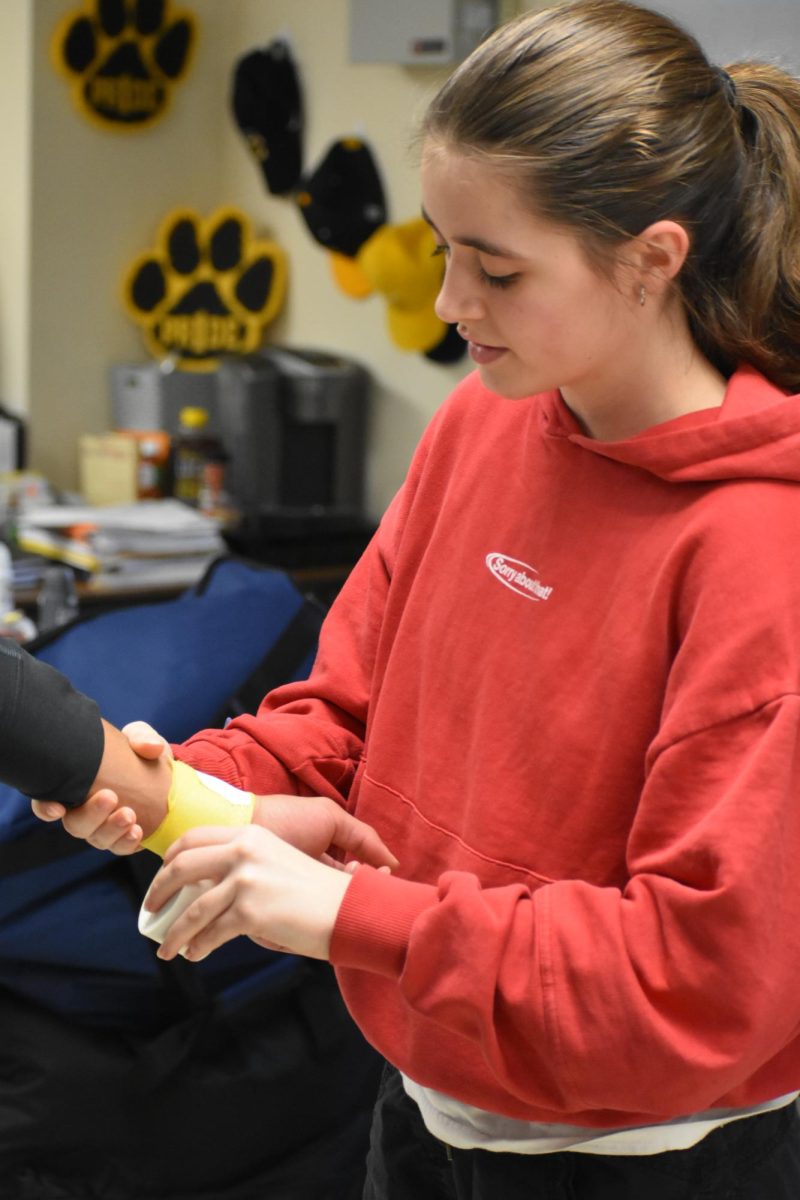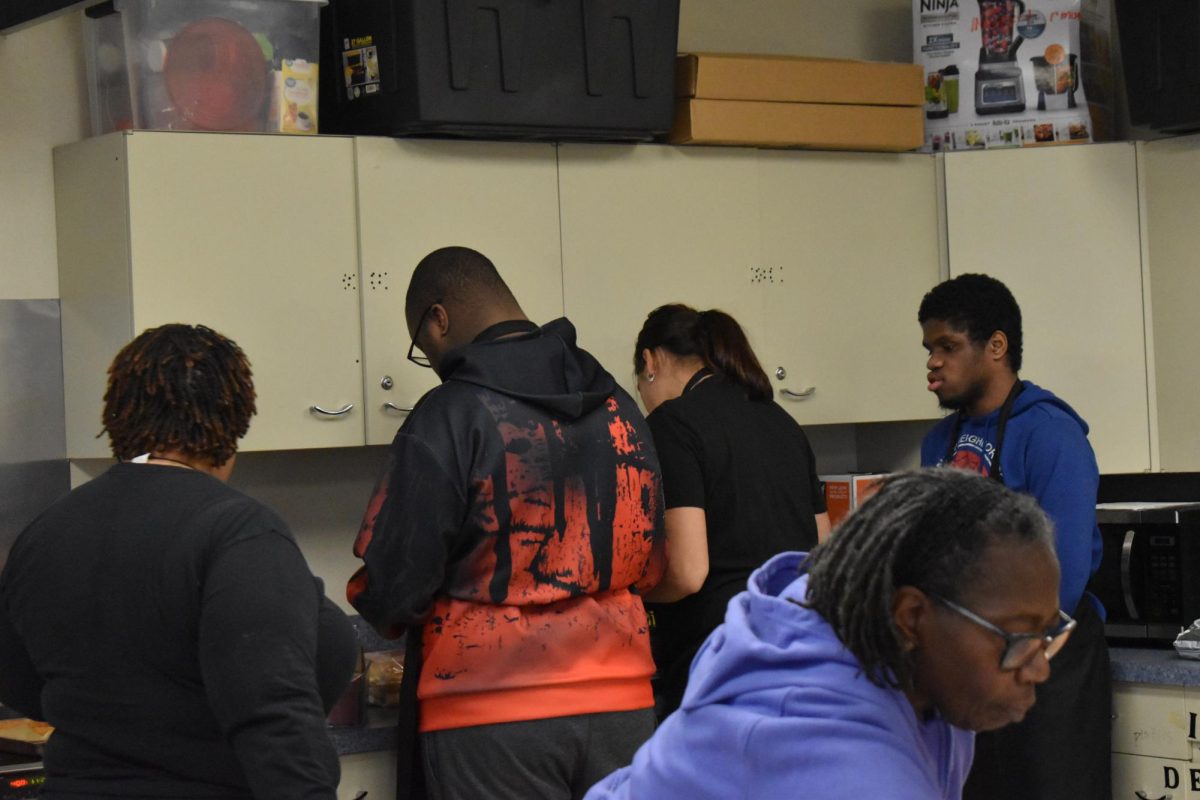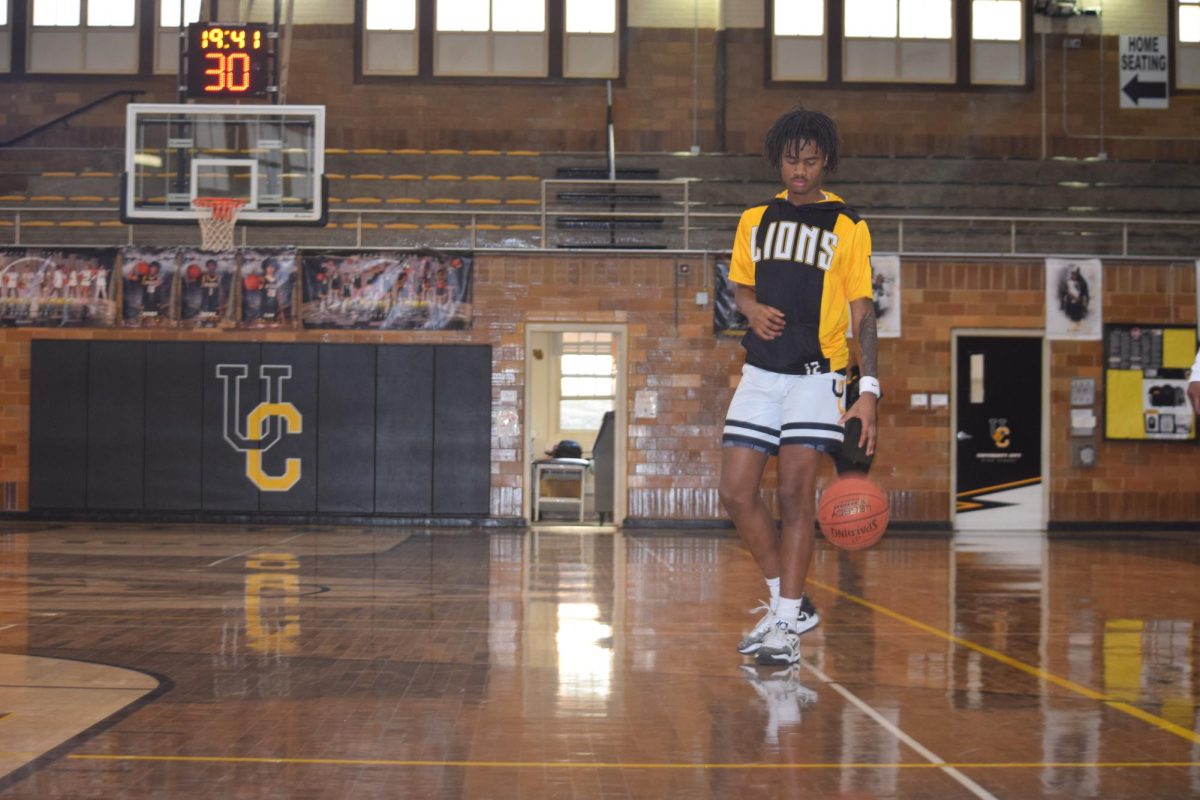In the early months of the school year, the musical is unveiled, and dozens of students eagerly sign up to act in it. The students’ hard work and dedication combine to help make the musical a success. This year, U. City is performing the musical Aida, written by pop stars Elton John and Tim Rice.
Ask a U. City student what they thought the most important part of the musical was, and the most common answers would most likely be the singing, dancing, and acting talent of the cast.
Senior Jordan Nerby, one of the musical’s actors, explained how one of Aida’s stars rose above the others: her voice.
“She just has a soul voice, you know what I mean?” he said.
But there is another crucial element to the musical: the set. While the live performances are important to the musical’s success, the backdrop on which they are shown is the product of months’ toil and planning. In Aida, the set is comprised of several massive pyramids, one of them 13 feet high and 29 feet wide.
Mr. Edward Propst, who teaches English and directs the spring and fall plays, is heavily involved in the construction of sets, and he is the man in charge of getting these impressive pyramids together. To do so, he and his crew started work about two months beforehand, gathering materials from various sources.
“The budget [for the set] has, in the past, been as high as $2,000,” Propst explained. “But in recent years, it’s gone down.”
Propst reduces the budget by recycling resources. “I’m a Dumpster diver,” he confessed. “During all the [school] construction, they’d be throwing the wood and stuff outside, and my students would be running out and bringing it back in.”
He also has a variety of old furniture for use in set construction, but that was not particularly helpful for Aída. “There aren’t any couches in ancient Egypt.”
Aída is a “modern” musical, which typically require little from a set; modern musicals focus on highlighting the actors and costumes, according to Propst. To this end, Propst and his crew constructed a “unit set.” Aída has one main set that can be used for a variety of different scenes, unlike past musicals such as Cinderella, which require very specific sets for different scenes.
“You just can’t do Cinderella without the big staircase,” Propst said. “You need it for the ball, when she comes down it, and you need it so she can run up it and lose the glass slipper.”
Much of the action actually takes place on top of the sloped platform of the main pyramid, which is why the pyramid is very sturdy, constructed of 2-by-8 wood planks with plywood on top.
“It’s built like a house, because at any one point there could be ten, fifteen dancers on top of it,” said Propst.
Some of the students aren’t quite so appreciative of it, though. “We have to dance on that thing,” said sophomore Andrea DiCarlo. “That’s like a 30-degree slope!”
As opposed to past years, all the work on Aída’s set was done by just a handful of people: Mr. Propst, senior Dan Eagen, and sophomore Abby Karlovsky, with some help from freshman Michael McMahon.
“Before, I’d have, say, 20 to 30 people working on the set,” Propst recalled. “And now it’s just three people!”
With a shortage of students, Propst is worried about who will man the lights for next year. Senior Dan Eagen graduates in May and has not yet passed on his knowledge to a new recruit. A replacement must be found.
The musical can’t soar without a healthy backing of dedicated students.
“There’s a strong tradition [at U City] … in arts, performance, and theater,” said Propst.
Many careers can stem from acting, singing, dancing, building, planning, and the other activities present in the musical.
“We had one freshman come in, second semester, and now he’s pursuing a degree in theater,” Propst said.
According to Propst, the entire experience is a memorable and momentous occasion.
“You never forget being in a play,” Propst said. “I’ve been out getting supplies; people ask me what it’s for, and I tell them, and they go ‘Oh, I was in a play back in…’ Even I remember being in a play my freshman year, The Sandbox. It never leaves you.”
Adapted from the March U-Times newspaper issue.


























